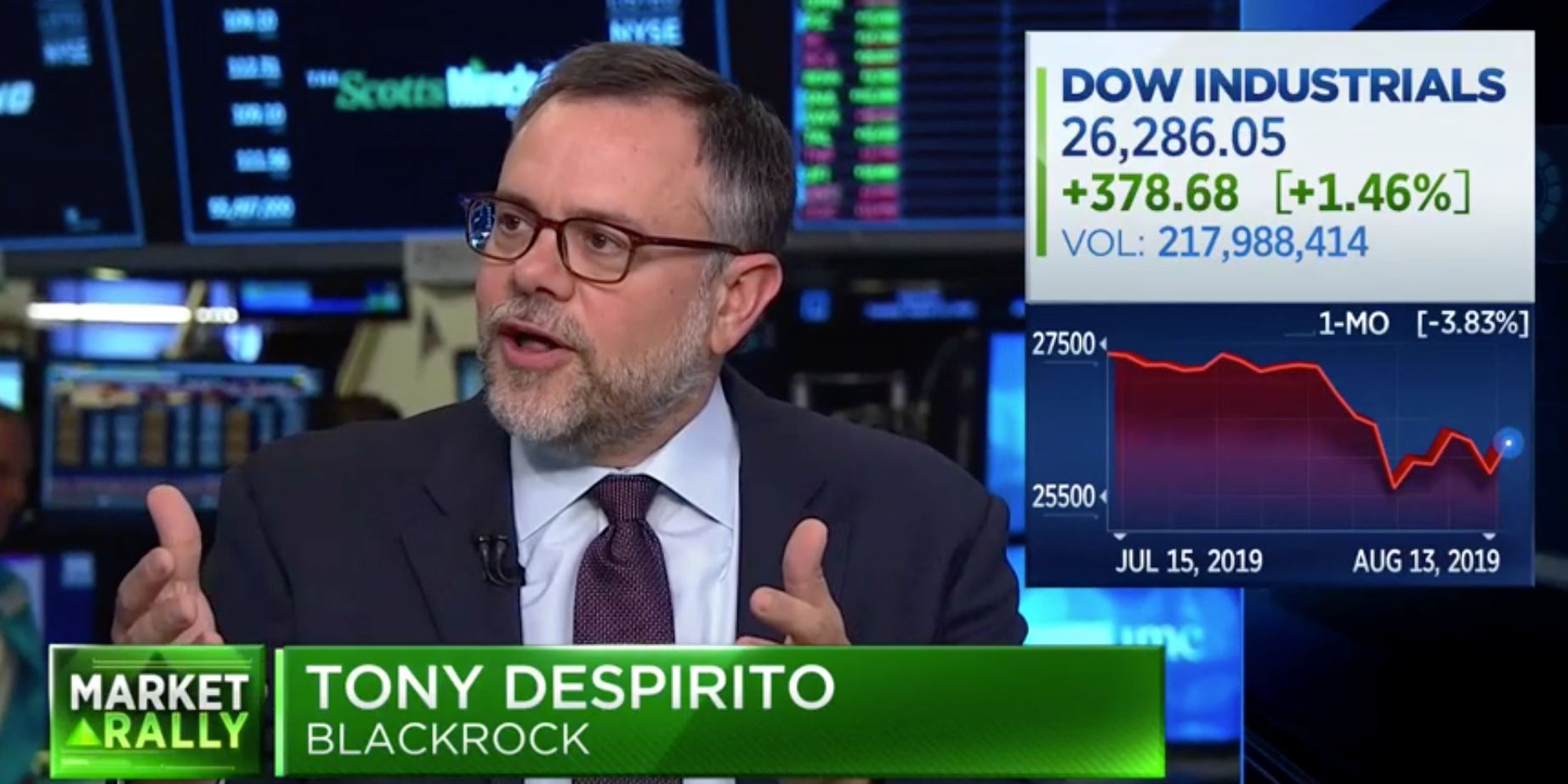
- Pent-up demand from consumers and significant cash reserves are setting up the economy and stock market for a potential roaring 2021, according to Tony DeSpirito, chief investment officer of US fundamental active equity for BlackRock.
- DeSpirito says this will be driven by COVID-19 vaccine rollouts across the globe.
- This scenario is setting the stock market up for three key trend reversals in early 2021 as investors begin to adjust to the reality of an imminent return to normal, says DeSpirito.
- From a resurgence in active stock management to a rotation into value, detailed below are the three key trend reversals BlackRock says investors should keep on their radar in early 2021.
- Visit Business Insider’s homepage for more stories.
With a tumultuous 2020 nearly in the books, investors are beginning to set their sights on a different investment landscape in the new year.
Pent-up consumer demand, heightened levels of cash on the sidelines, and the swift administration of successful COVID-19 vaccines could set the stock market up for a roaring 2021, Tony DeSpirito, chief investment officer of US fundamental active equity for BlackRock, said in a recent client note.
But a swift reopening of the economy and return to normal could deliver strong trend reversals for stock market investors in early 2021, DeSpirito highlighted.
Detailed below are the three key trend reversals to watch for as 2021 begins to unfold, according to BlackRock, which is the world’s largest asset manager.
(1) "Active reactivated"
The post-Great Recession stock market was one generally marked by a steadily rising tide that lifted all boats, with the S&P 500 index rising nearly 500% from its March 9, 2009 low through the end of 2019.
Stable and modest economic growth, accompanied by low interest rates and limited inflation helped fuel a broad stock market rally that widened the gap between passive and active investing.
But then the COVID-19 pandemic hit, hastening a swift recession and economic recovery that now serves as a backdrop for revealing winners and losers in the stock market. This sets up a ripe environment for the return of active stock picking, DeSpirito explained.
"We expect investors to begin to step beyond the 'obvious winners' and deploy cash into beaten-down sectors and stocks that could benefit in recovery. Generally speaking, this is where active investing can have an upper hand over index tracking," DeSpirito said.
(2) "Value comeback"
An opportunity is brewing for value investors as they seek to finally stage standing relative outperformance over growth for the first time in more than a decade. This opportunity has been heightened ever since the announcement of positive COVID-19 vaccine data from Pfizer and Moderna in November.
Investors should prepare for a rotation into value as cyclical stocks, which have strong ties to economic growth and currently sport low valuations, "should enjoy a larger bounce with market and economic recoveries," according to DeSpirito.
Value stocks tend to lead the market higher in the early stages of an economic recovery from a recession, the note highlighted. One thing working for value stocks into next year is easy comps.
As companies begin to report earnings next year, value stocks will have an easier time beating their lackluster 2020 figures relative to growth companies that have a higher bar to pass to impress investors, DeSpirito said.
On top of that, buybacks could make a big return in 2021 as corporate executives become more certain in their outlook for the future. This would be a boon for value stocks, "as buying shares at lower valuations has a greater proportionate impact on the value of the remaining shares," DeSpirito explained.
(3) "Dividends to deliver"
Dividends, like stock buybacks, were one of the first casualties of the pandemic as corporations looked to shore up their balance sheet to survive the ensuing economic shutdowns. Those dividend cuts scared away income seeking investors even as declining bond yields continued to make income oriented equities more attractive.
But dividend cuts peaked in May and have since stabilized, DeSpirito said.
"We expect dividend growth to resume in 2021 as vaccine distribution and greater clarity in general give company managements the confidence to release excess cash in the form of dividends and buybacks," the note said.
As long as interest rates remain lower for longer around the world, company dividends will likely provide better income than bonds for some time, DeSpirito said, adding that the optionality of growing dividends outshines bond coupons' fixed maturity.
"Dividend growth that compounds over time is a compelling proposition in an environment of sub-1% U.S. Treasury yields," DeSpirito said.
